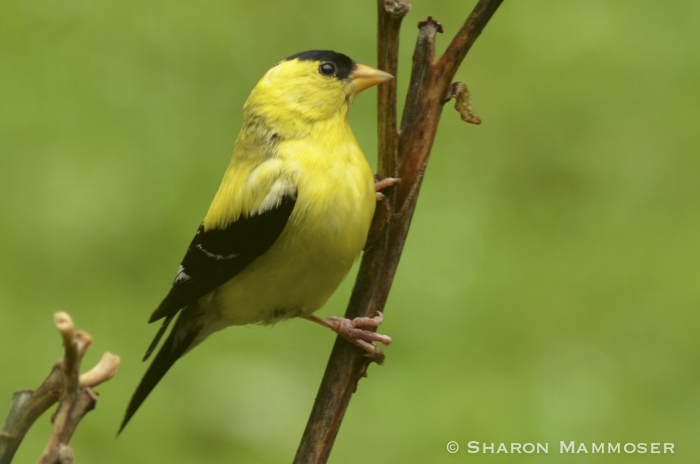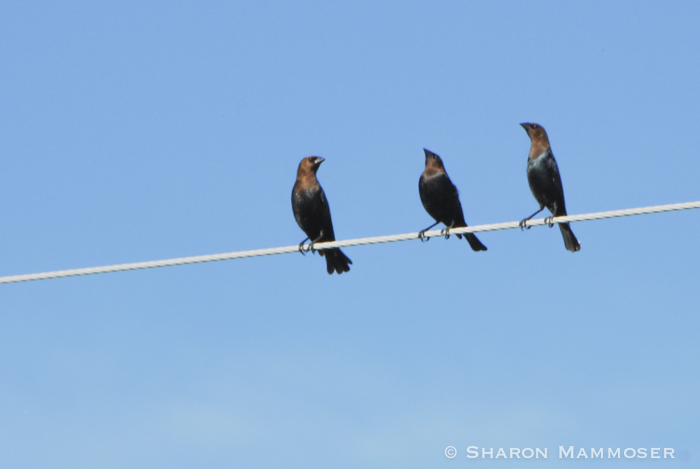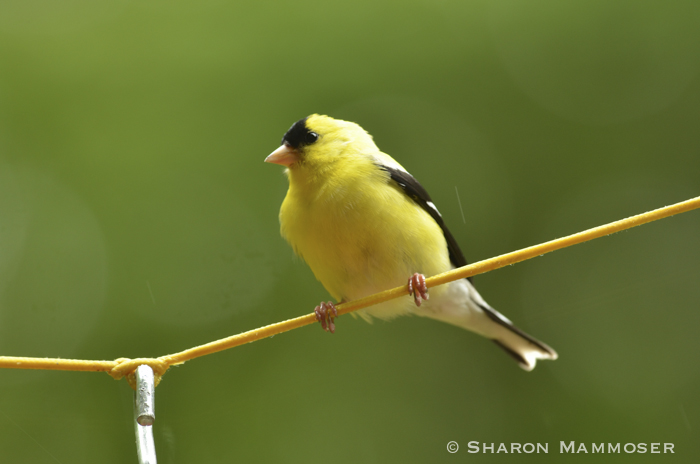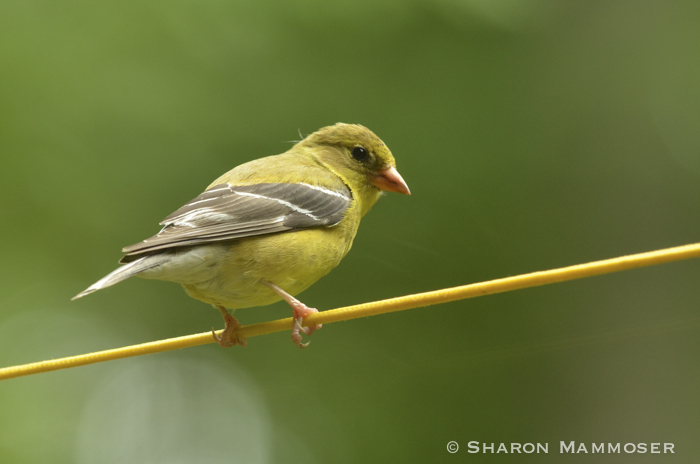You’ve probably seen these beautiful, bright yellow birds at bird feeders and would agree with me that they are always a treat to see. What do you know about these lovely birds? Here are a few facts about the American Goldfinch:
 1. American Goldfinches are the only member of the finch family to molt two times a year. In the winter males have drab brown feathers with hints of yellow and white wing bars, like the females. In summer, males are bright yellow, with black caps, black wings with white wing bars.
1. American Goldfinches are the only member of the finch family to molt two times a year. In the winter males have drab brown feathers with hints of yellow and white wing bars, like the females. In summer, males are bright yellow, with black caps, black wings with white wing bars.
2. They are one of the few birds that eat an all seed diet, even feeding regurgitated seed to their babies, unlike many other birds who feed their young insects. They eat thistle, dandelion, ragweed, mullein, grass, sunflowers, evening primrose and more. Have you heard of a cowbird?

These birds do not build their own nests but instead lay their eggs in other birds’ nests. And these birds will raise them as if they were their own! Trouble comes though when they pick a goldfinch nest because the all-seed diet of the goldfinch is not enough to sustain the cowbirds and so they end up dying.
3. Have you ever seen a goldfinch fly? They always seem happy, with an undulating flight like a bird on a roller coaster. They often sing while they fly, repeating their perchickory call as they go. (Click HERE to listen to their call)
4.The American Goldfinch is the state bird of Iowa, New Jersey and Washington.

5. The female builds the nest by herself, though the male will often watch from a nearby perch. It takes her about 6 days.
6. Nests are less than 30 feet high, usually located in a tall shrub. The nest is woven together so tightly with spider web silk that it can hold water!
7. Goldfinches are the last of our songbirds to nest, waiting for the thistle and other seeds to mature before they start. This is usually July and  August. They will have two broods per summer.
August. They will have two broods per summer.
8. The female lays 4-6 eggs and will incubate for 12-14 days. During this time the male will bring her food.
9. The babies leave the nest after 12-17 days but will continue to be fed by both parents for several weeks after.

10. Goldfinches will sometimes visit hummingbird feeders as is evidenced in the video below. I thought it would be impossible for the bigger birds to actually get any of the sweet nectar, but sure enough, if you watch closely, you can see some of the clear liquid flying off onto the window. Have you ever had one visit your feeder?

